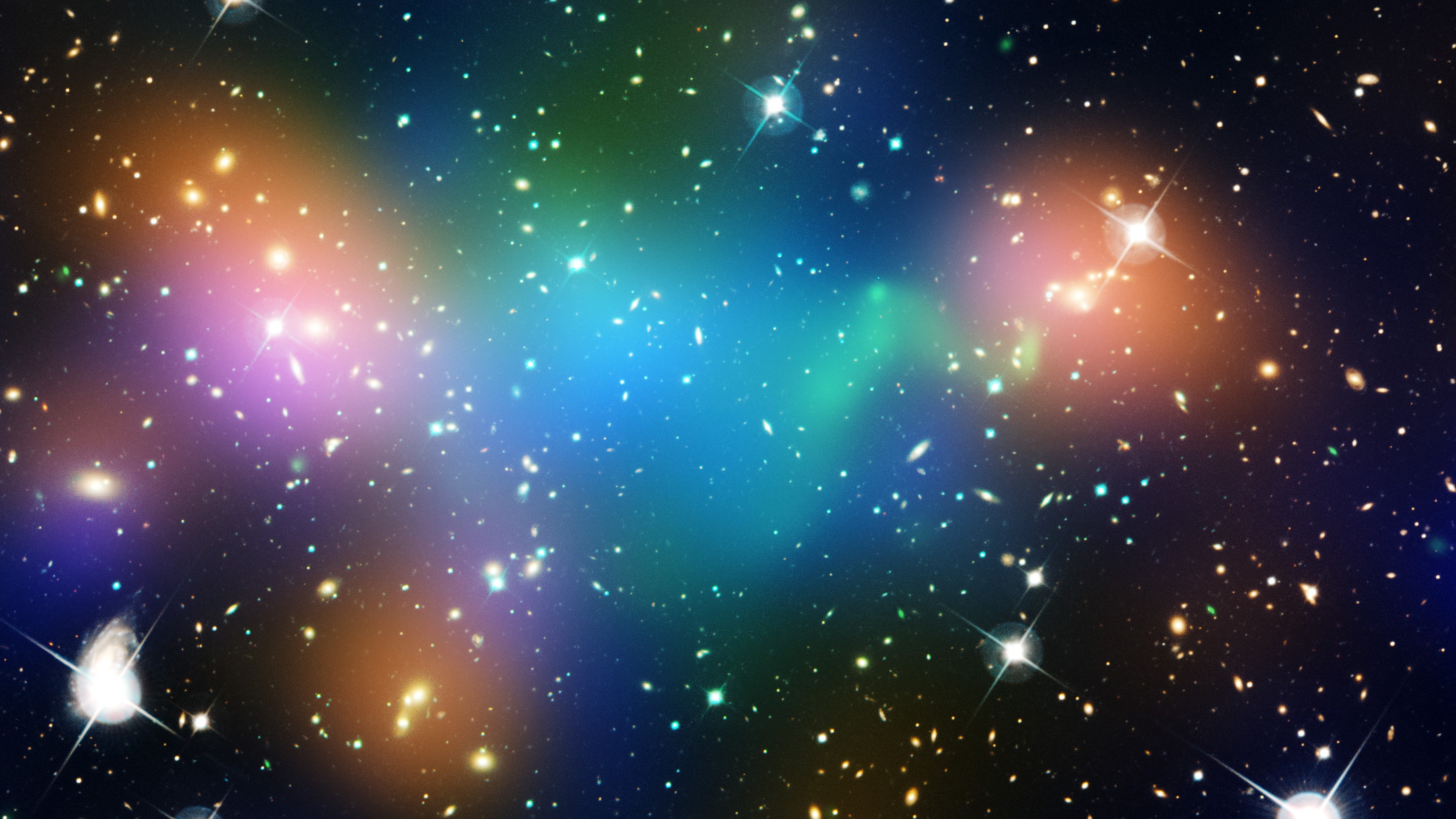Millions of invisible 'mirror stars' could exist in the Milky Way, and astronomers know how to find them
An entire universe made of 'dark' particles could exist within our own, and astronomers may know the first place to look: In the mysterious hearts of supposed 'mirror stars'.

There may be an invisible universe of stars, nebulas and galaxies made up entirely of dark matter. And astronomers now know how to look for it.
To put it simply, dark matter is a mystery. Astronomers have dozens of independent pieces of evidence that all point to the existence of some form of matter in the universe that is effectively invisible. It doesn't interact with light. But it does exert a gravitational influence on normal matter. Dark matter keeps galaxies glued together despite their high spin rates, keeps cluster gas cohesive despite its high temperature, bends the path of background light all over the universe, and even shapes the largest structures in the cosmos.
Despite evidence for its existence, the identities of dark matter particles remain unknown. For decades, cosmologists assumed there was just one kind of dark matter particle, a single species that dominates the universe. But recently they have begun to wonder if dark matter might be as rich and varied as the normal universe. For example, some theories of high-energy physics predict the existence of a twin, or mirror, to every normal matter particle living in the dark sector. In this vision of the cosmos, there would be dark electrons, dark quarks, dark neutrinos, and so on, all interacting with each other through their own set of fundamental forces, completely alien from the forces we know.
This mirror universe would be everywhere, but completely invisible to us. So how can we test this idea? This was exactly the question posed by a team of astronomers in a paper, which has not yet been peer reviewed, published Nov. 29 to the preprint database arXiv. They found that, surprisingly, mirror stars might make themselves visible, and they would look very different than anything else we've ever found in the universe.
Related: Dark matter may have its own 'invisible' periodic table of elements
Mirror stars would form as different species of dark matter interact, lose energy, and clump together. This would unfold in a process analogous to the formation of ordinary stars, where hydrogen and helium gravitationally collapse, release energy through the emission of photons, and become dense enough to form stars. These mirror stars, however, would interact through their own forces of nature, and would emit radiation — although it would be through the release of dark photons, which would be invisible to us.
There could be millions, even trillions of these dark stars floating throughout the Milky Way galaxy alone, given that dark matter accounts for roughly 80% of the mass of every galaxy.
Sign up for the Live Science daily newsletter now
Get the world’s most fascinating discoveries delivered straight to your inbox.
But crucially, as the authors realized, these mirror stars still have gravity. That's how we know that dark matter exists in the first place. And any massive, relatively compact object, whether a regular star or a mirror star, will gravitationally attract matter around it. So these mirror stars will pull on gas and dust floating in the interstellar medium.
That regular matter will itself clump up into what the authors call "nuggets." As the nuggets collapse they will heat up and emit radiation. That radiation will look like it comes from a normal star, but not a type of star astronomers have identified. Instead the nuggets will be very red, because they don't have the high temperatures of their normal stellar siblings, and very dim, because the nuggets are not very large.
But there are other small, dim objects in the universe, such as white dwarfs and planetary nebulas. The authors discovered that they can distinguish these nuggets from white dwarfs based on the wavelengths of electromagnetic radiation they emit. If we see what looks like a dim white dwarf but it has the wrong spectrum, it just might be a nugget of normal matter sitting in the heart of a mirror star. Also, these nuggets will emit light in wavelengths not found in typical planetary nebulas.
While the idea of a mirror universe is very hypothetical, it is a realtestable, scientific idea, the study shows. If mirror stars are out there, there just might be nuggets in their hearts, and with sensitive and large enough surveys we just might find them.

Paul M. Sutter is a research professor in astrophysics at SUNY Stony Brook University and the Flatiron Institute in New York City. He regularly appears on TV and podcasts, including "Ask a Spaceman." He is the author of two books, "Your Place in the Universe" and "How to Die in Space," and is a regular contributor to Space.com, Live Science, and more. Paul received his PhD in Physics from the University of Illinois at Urbana-Champaign in 2011, and spent three years at the Paris Institute of Astrophysics, followed by a research fellowship in Trieste, Italy.










